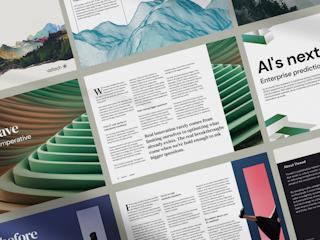Thread
Divide and conquer
How digital twins are becoming our AI teammates

People have long speculated about the idea of digital twins that mirror our personalities, preferences and behaviors — dynamic replicas that could work, think and act on our behalf. But for most of that history, the idea has been more fiction than fact. The technology simply wasn’t there.
What we do have are digital twins of systems we can measure and model. A digital twin of a Rolls-Royce engine makes perfect sense: the system is deterministic, governed by physics and responds predictably.
But people aren’t engines. We’re emotional, unpredictable and deeply contextual. We’re stochastic. And modeling that kind of variability introduces a whole new level of complexity.
A digital twin of water? Easy. We know when it freezes and when it boils. A digital twin of me making a complex decision after two coffees and a bad night of sleep? Good luck with that.
But thanks to recent advances in AI, we’re starting to see credible efforts to replicate aspects of human decision-making. We’re not talking about full-body doubles but slivers of you, trained on context and tuned for specific tasks. That’s where things get interesting.
Sliced, not copied: the age of mini twins
This shift in thinking opens up a more practical, if fragmented, possibility: What if the digital twin of the future isn’t a complete replica of a person, but dozens of mini ones?
In the Apple TV series Severance, a psychological sci-fi drama where employees undergo a procedure to split their work and personal memories, the character Gemma is fragmented into multiple AI-like simulations. Each room she enters contains a version of her that exists solely to respond to one specific fear or scenario: turbulence on a flight, writing a thank-you note, being stuck in traffic. These aren’t master replicas; they’re contextual slices of personality.
That’s a much more realistic view of where AI is headed.
In enterprise settings, agentic AI is already creating functional proxies of people performing narrowly defined roles. Want an agent to schedule meetings? Write a followup email? Draft code snippets? That’s all possible today and improving quickly. These agents aren’t true twins. They don’t "think" like you. But they can act like you. At least well enough to pass.
And here's where things get even more nuanced: Humans don’t disappear from these workflows. Instead, they sit in the loop — guiding, correcting and injecting judgment where rules alone won’t suffice. The most effective agentic systems aren't replacements for people. They’re teammates. Digital twins that complement, not clone, our contributions.
You could argue that a GPT answering emails in my tone or generating summaries from my notes is a digital twin. Or maybe it’s just really good tooling. Either way, we’re building fragments of ourselves into systems that can carry out tasks with increasingly little oversight.

When your twin works for someone else
The most advanced digital twins of people might not be the ones we design for our own use — but the ones built by brands to predict our behavior. Every click, scroll and pause feeds a model. The result is a behavioral simulation of you.
When designed with care, these digital twins create value on both sides, helping companies meet their goals while genuinely enhancing your experience.
And as AI gets better, those behavioral models will get increasingly accurate. The challenge — and the opportunity — is to design these systems for mutual benefit. Not just to optimize conversion rates, but to build trust, deepen relevance and respect autonomy.
Where we go from here
Taken together, these developments suggest a future filled not with one perfect replica of a person, but many context-specific ones — scattered across platforms, optimized for different purposes, serving us in different ways.
We may never create a single, complete digital twin of a person. But we are already deploying fragments of ourselves across digital systems — in the workplace, in consumer tech and in every brand interaction we have.
The opportunity ahead isn’t about building copycats of ourselves. It’s about practical, contextual augmentation. It’s about building smarter agents that work with us — not just on our behalf, but for us.
As we enter this new phase, the most responsible, and exciting, thing we can do is shape a future where digital twins are designed with intention, powered by insight and aligned with human outcomes. In the age of AI, the question isn’t whether digital twins are coming. It’s who’s building them and how they are serving us.




